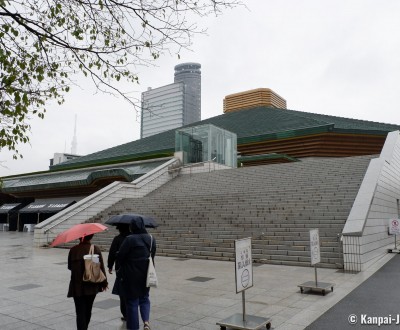Ryogoku
The Sumo Wrestlers’ District
Ryogoku, located east of the Sumida River, is the name of the district where sumo wrestlers live in Tokyo. It spans a couple of streets around Ryogoku Station and includes the Kokugikan Sumo Hall and the Edo-Tokyo Museum. Its specialty dish, the chanko-nabe, is a kind of hot-pot that the famous wrestlers adore.
In this quite small area in Tokyo thrives sumo wrestling, a Japanese traditional sport that is nowadays professionalized. The wrestlers’ teams usually live here, sharing their time between trainings in the heya, the sumo training stable, and the national tournaments.
The Kokugikan Arena is the biggest one in Japan, and an iconic structure of the district. It hosts sumo wrestling competitions in January, May and September each year. It is then possible to watch dozens of sumo bouts in one day. The best competitors enter the matches in the late afternoon. On the first floor of the arena, a free museum is dedicated to sumo wrestling.
Ryogoku’s atmosphere entices gourmets to enjoy a chanko-nabe, sumo wrestlers’ traditional meal. Many restaurants in the area offer this delicious hot-pot, full of meat, fish and vegetables, the ideal comfort food in cold weather.
The Buddhist temple Eko-in is located to the south of Ryogoku Station and is known as the first outdoor space where sumo bouts were organized, long before the construction of indoor arenas in the beginning of the 20th century.
Another touristic attraction in Ryogoku is the historical and entertaining Edo-Tokyo Museum. Visitors will be charmed by a stroll between replica houses of the ancient districts of Tokyo.
Just behind the Kokugikan Arena, the Japanese garden Kyu-Yasuda Teien offers a refreshing and relaxing halt. A little bit further north, in Yokoamicho Park, the Tokyo Memorial Hall recalls the 1923 Great Kanto Earthquake and houses a memorial to the victims of the Second World War.

